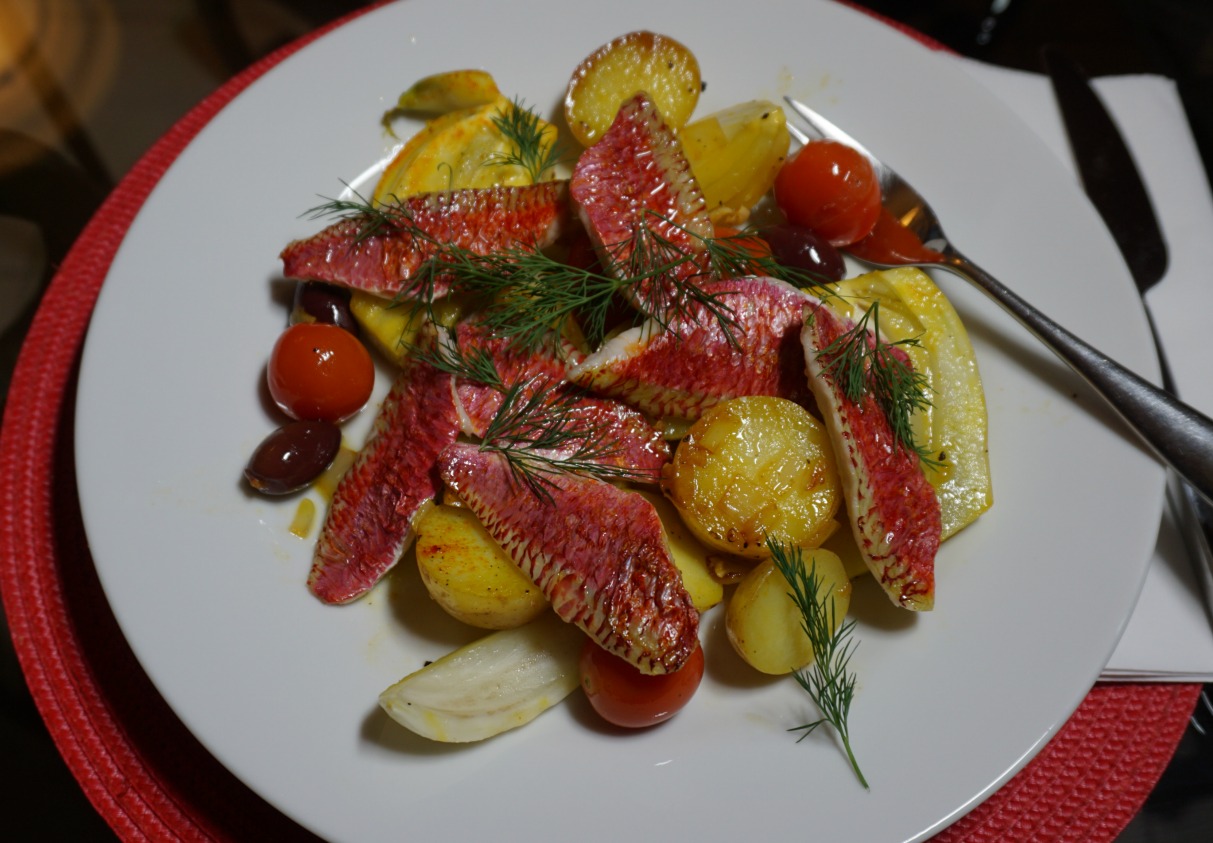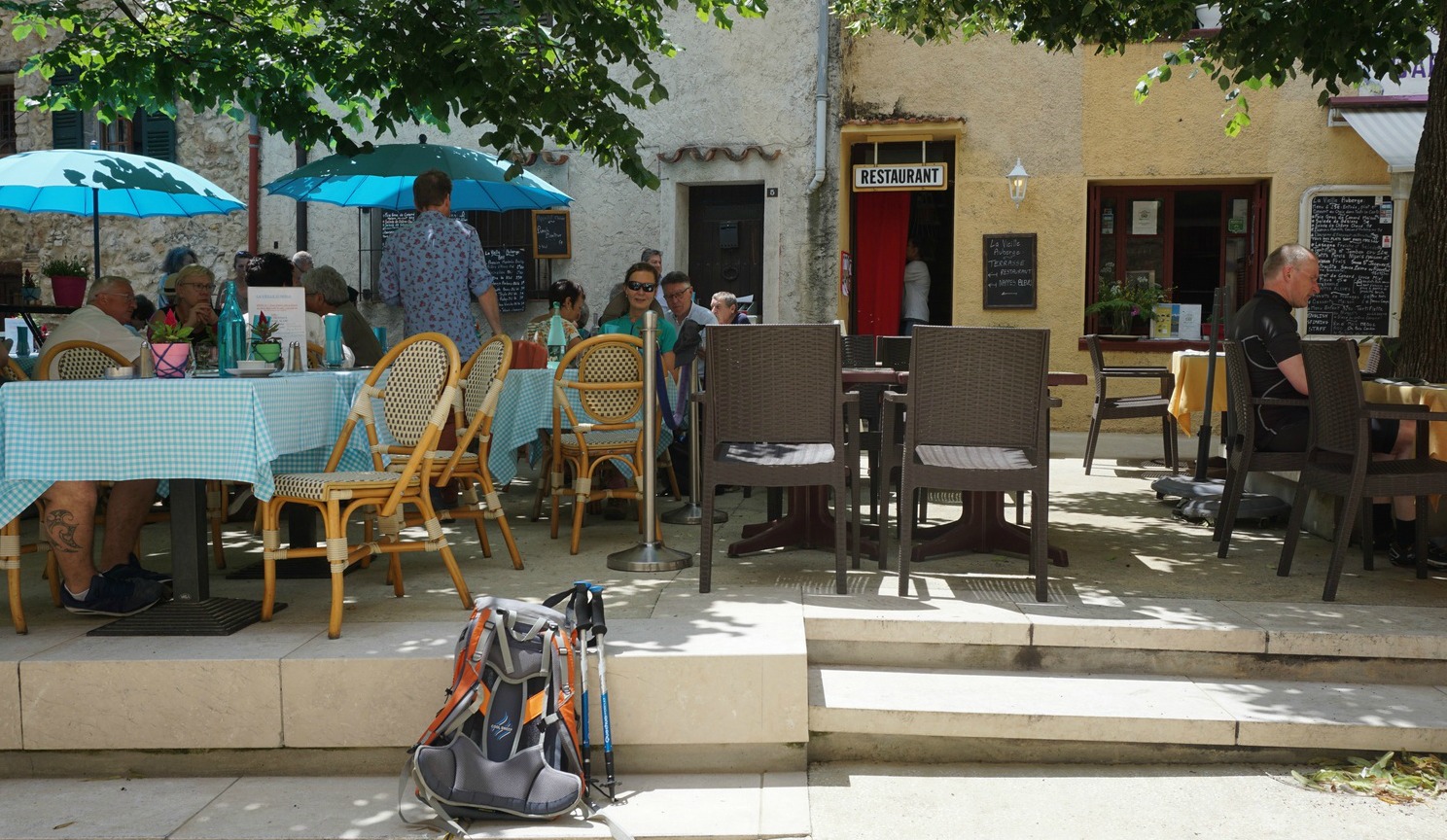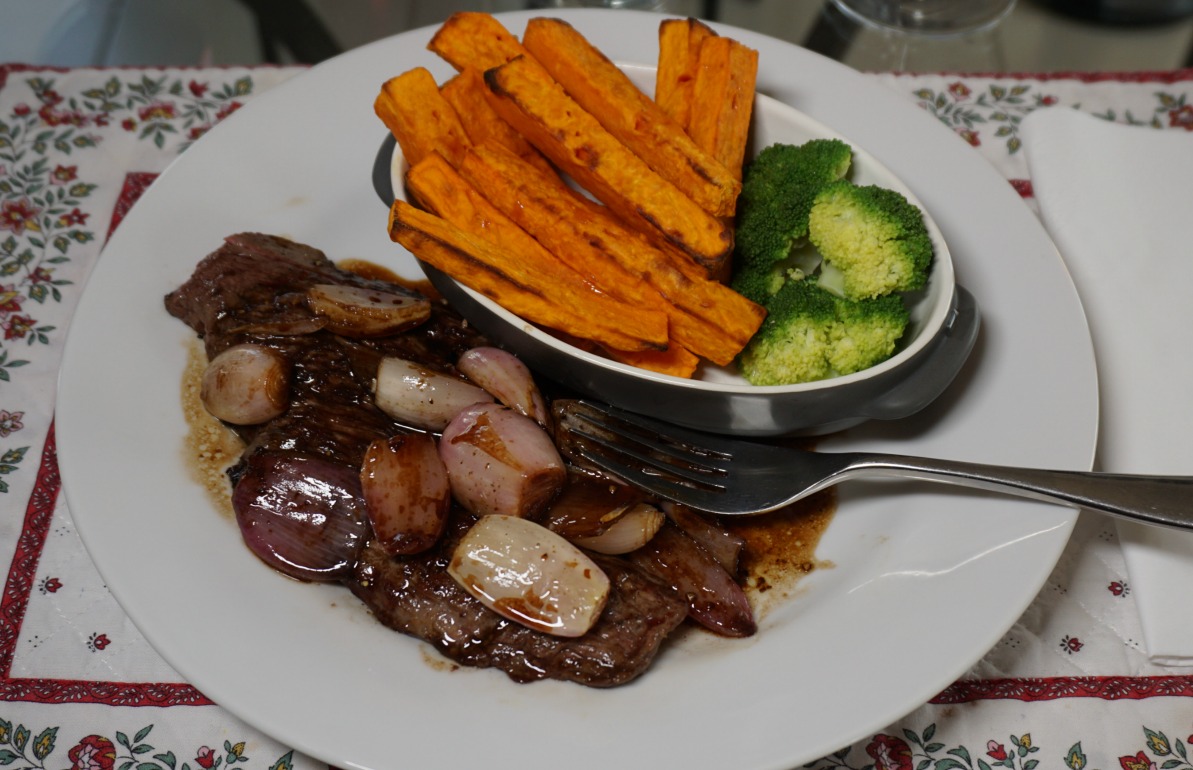Mediterranean red mullet
Mediterranean red mullet
The following recipe has typical Mediterranean ingredients: olive oil, red mullet, fennel, black olives, cherry tomatoes, garlic, and saffron. If you cannot find red mullet in your area, you could replace it with bream or some other firm- fleshed white fish. I prefer to bake red mullet fillets in oven. They only need to be brushed with olive...






















